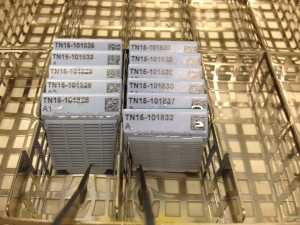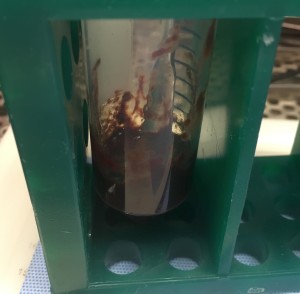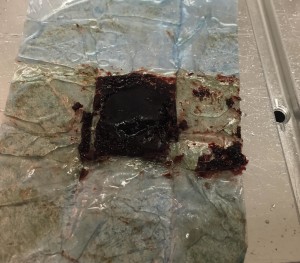Tissue processing is a technique used to desiccate tissue using alcohol. The tissue still needs to have some water in it though, otherwise it would just be as hard as a rock and impossible to cut. There is also the possibility of the tissue receiving incomplete dehydration due to the thickness of the tissue. If it’s too thick, the alcohol can’t penetrate far enough into the tissue. Thankfully, if the gross dissection was done properly, the tissue was just the right size for our validated processes.

We used automated tissue processors at Caris Lifesciences, but they were validated using hundreds of samples to make sure that the process worked well. We had several different run profiles that would work for large samples, medium samples, and small samples. The only thing that changes between the profiles is the length of time that the tissue sits in the alcohol. The alcohol is used to dry the tissue, then it goes through steps of xylene which removes the alcohol from the tissue. Depending on the process, this can happen multiple times, or the xylene can be introduced as the final step before paraffin infiltration. The final step of tissue processing is the introduction of paraffin. The paraffin is usually pressurized to help infiltrate into the tissue. This is usually the longest step and important for successful microtomy.

The tissue processing we did required that the tissue already be fixed in formalin. We didn’t have a process for doing fresh tissue, since the company never had to deal with it. There were some times that we were trying to process cytological specimens, and those were difficult to get processed. We would have had to validate a new process for those, but that didn’t happen while I was employed there.





